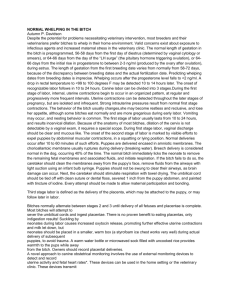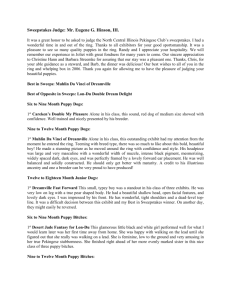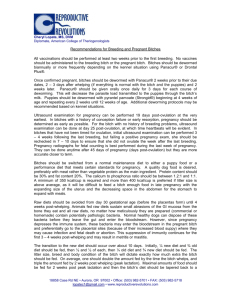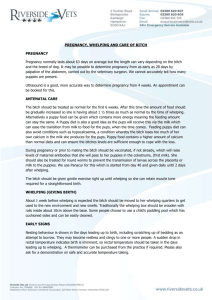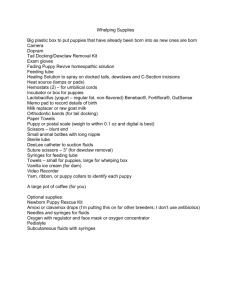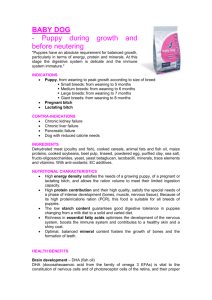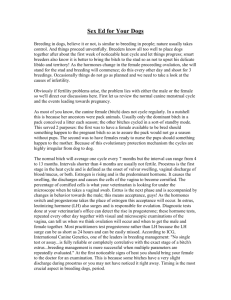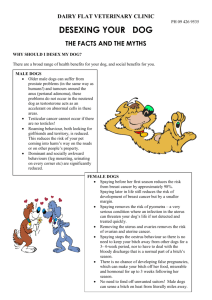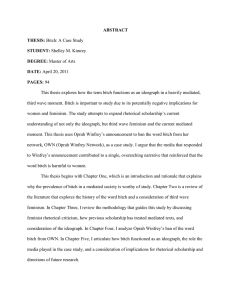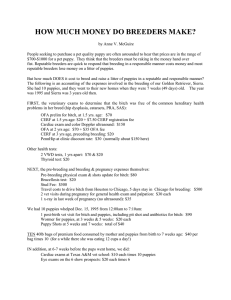Ettinger: Textbook of Veterinary Internal Medicine, 7th Edition
advertisement
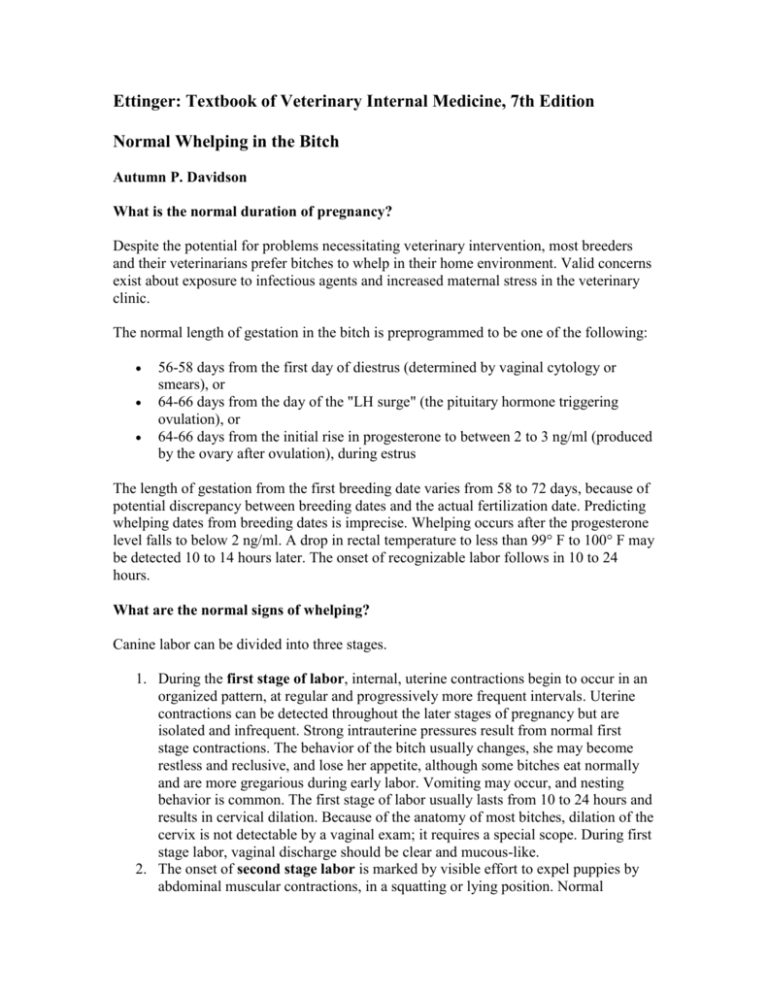
Ettinger: Textbook of Veterinary Internal Medicine, 7th Edition Normal Whelping in the Bitch Autumn P. Davidson What is the normal duration of pregnancy? Despite the potential for problems necessitating veterinary intervention, most breeders and their veterinarians prefer bitches to whelp in their home environment. Valid concerns exist about exposure to infectious agents and increased maternal stress in the veterinary clinic. The normal length of gestation in the bitch is preprogrammed to be one of the following: 56-58 days from the first day of diestrus (determined by vaginal cytology or smears), or 64-66 days from the day of the "LH surge" (the pituitary hormone triggering ovulation), or 64-66 days from the initial rise in progesterone to between 2 to 3 ng/ml (produced by the ovary after ovulation), during estrus The length of gestation from the first breeding date varies from 58 to 72 days, because of potential discrepancy between breeding dates and the actual fertilization date. Predicting whelping dates from breeding dates is imprecise. Whelping occurs after the progesterone level falls to below 2 ng/ml. A drop in rectal temperature to less than 99° F to 100° F may be detected 10 to 14 hours later. The onset of recognizable labor follows in 10 to 24 hours. What are the normal signs of whelping? Canine labor can be divided into three stages. 1. During the first stage of labor, internal, uterine contractions begin to occur in an organized pattern, at regular and progressively more frequent intervals. Uterine contractions can be detected throughout the later stages of pregnancy but are isolated and infrequent. Strong intrauterine pressures result from normal first stage contractions. The behavior of the bitch usually changes, she may become restless and reclusive, and lose her appetite, although some bitches eat normally and are more gregarious during early labor. Vomiting may occur, and nesting behavior is common. The first stage of labor usually lasts from 10 to 24 hours and results in cervical dilation. Because of the anatomy of most bitches, dilation of the cervix is not detectable by a vaginal exam; it requires a special scope. During first stage labor, vaginal discharge should be clear and mucous-like. 2. The onset of second stage labor is marked by visible effort to expel puppies by abdominal muscular contractions, in a squatting or lying position. Normal deliveries occur after 10 to 60 minutes of such efforts. Puppies are delivered encased in amniotic membranes. The chorioallantoic membrane usually ruptures during delivery (breaking water). Breech delivery is considered normal in the dog, occurring 40% of the time. The normal bitch immediately licks the neonate to remove the remaining fetal membranes and associated fluids, and initiate respiration. If the bitch fails to do so, the caretaker should clean the membranes away from the puppy's face and remove fluids from the airways with light suction using an infant bulb syringe. Puppies should not be swung to clear their airways, as brain damage can occur. Next, the caretaker should stimulate respiration with towel drying. The umbilical cord should be tied off with clean suture or dental floss, severed 1 inch from the puppy abdomen, and painted with tincture of iodine. Every attempt should be made to allow maternal participation and bonding. Also, caretakers must remember that some bitches become quite protective of their newborns. They may growl or snap even at people they know well. Therefore approach a bitch and her new puppies slowly and carefully. 3. Third stage labor is defined as the delivery of the placenta, which may be attached to the puppy, or may follow later in labor. Bitches normally alternate between stages 2 and 3 until delivery of all fetuses and placentae is complete. Most bitches will attempt to sever the umbilical cords and ingest placentae. There is no proven benefit to eating placentas. Suckling by neonates during labor causes increased oxytocin release, promoting further effective uterine contractions and milk letdown, but neonates should be placed in a smaller, warm box (a Styrofoam ice chest works very well) during actual delivery of subsequent puppies, to avoid trauma. A warm water bottle provides warmth to the pups while away from the bitch. Owners should record placental deliveries.
